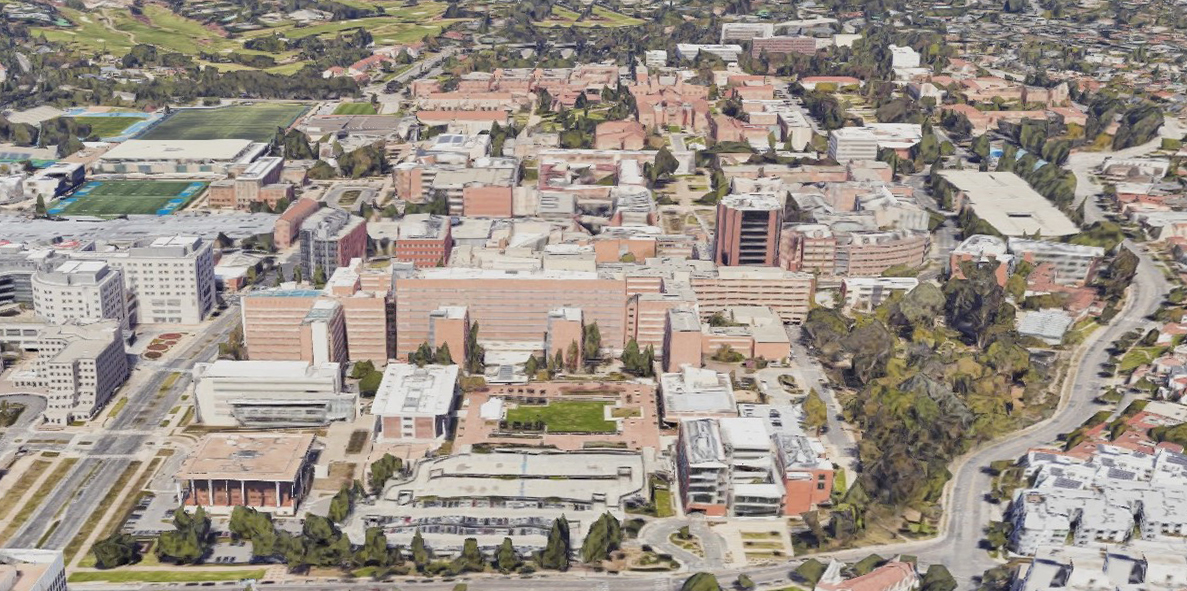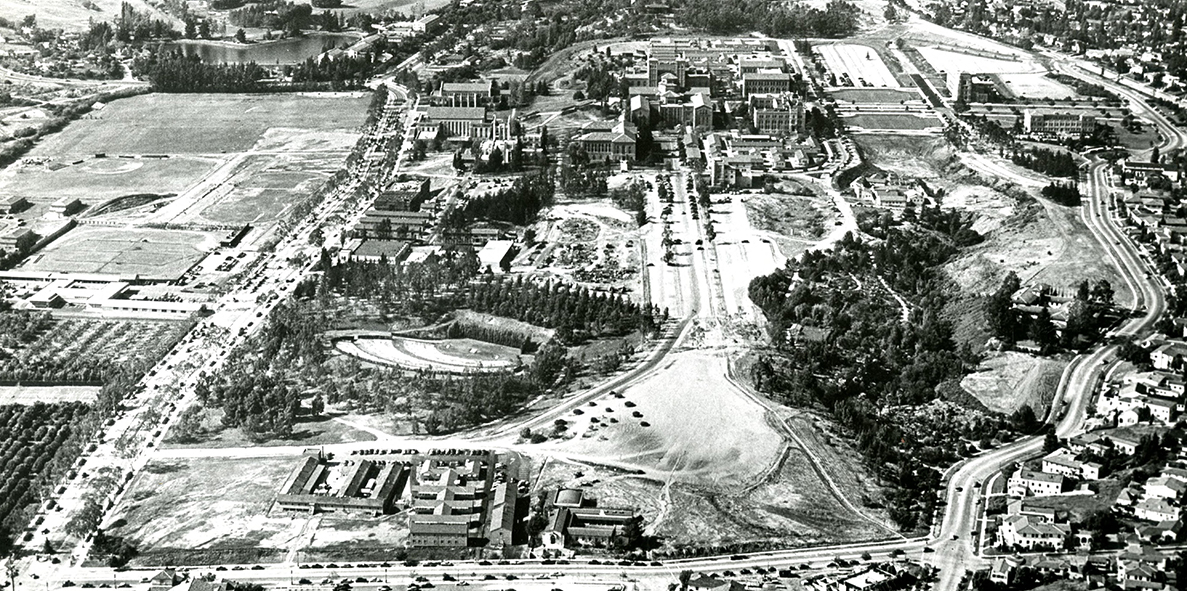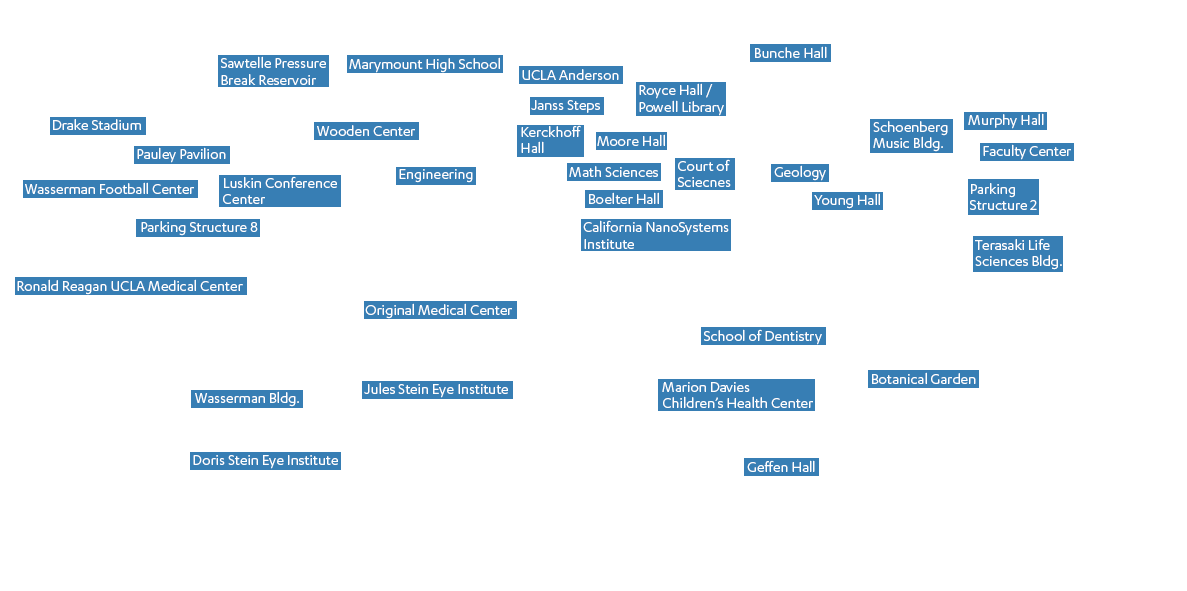UCLA in 1950 and 2022
The photo of UCLA circa 1950 captures the Westwood campus at 21 years of age, on the cusp of transitioning from the “Southern Branch of the University of California” to a world-class institution in its own right, separate in name and in reputation from its parent university to the north. As described in an installment of the Alumni Association’s History of UCLA series, created to compliment the University’s centennial celebration, the decade of the ’50s would be a time of physical growth and attitudinal change at UCLA.
At the time of the historical photo, the campus was still dominated by the original four buildings in the Royce Quad and the buildings that spread out from that nucleus, most of which were in the “North Campus” area, or near the central east-west axis, Bruin Walk. The territory that would become the science-oriented “South Campus” was sparsely developed and, on the west side of Westwood Boulevard, included orchards that were used by the College of Agriculture.
In the area that the historical photo shows as being dominated by the Greek amphitheater that had hosted the first Spring Sing in 1945, ground would soon be broken for the UCLA Medical Center, which opened in 1955 and would become a perennially top-ranked hospital. The Jules Stein Eye Institute, situated between the Medical Center and Le Conte Avenue, would join the medical enterprise a decade later and also become a leader in its field. The undeveloped area immediately northeast of the amphitheater would become home to the Court of Sciences and the buildings, including Boelter Hall, the Geology Building and Young Hall, that surround it.
Across Westwood Boulevard, north of the orchards, athletics fields stretched all the way to Sunset Boulevard — as did the Boulevard itself, until the ongoing construction of the ’60s cut it off from the famous thoroughfare that forms its northern border. In the mid-’60s, the baseball field just south of Bruin Walk would be replaced by the iconic Pauley Pavilion. Much later, the parking lots and tennis courts that had replaced the orchards would see the rise of the state-of-the-art Ronald Reagan UCLA Medical Center and UCLA Medical Plaza. Just north of Sunset, bordering Bel-Air Country Club and Marymount High School, was the Sawtelle Pressure Break Reservoir, which was completed in 1924 and used until the 1970s.
The change in attitude that was brewing as the growth of the ’50s continued into the ’60s is perhaps best illustrated by how UCLA referred to itself. In 1958, the University’s name changed from “University of California at Los Angeles” to University of California, Los Angeles,” a subtle change that foreshadowed a more significant — if less official — one: after becoming Chancellor in 1960, Franklin D. Murphy asked campus telephone operators to greet callers using “UCLA” instead of “University of California.” The days of being a mere “branch” were long gone.
Visit the "Then and Now" archive.


